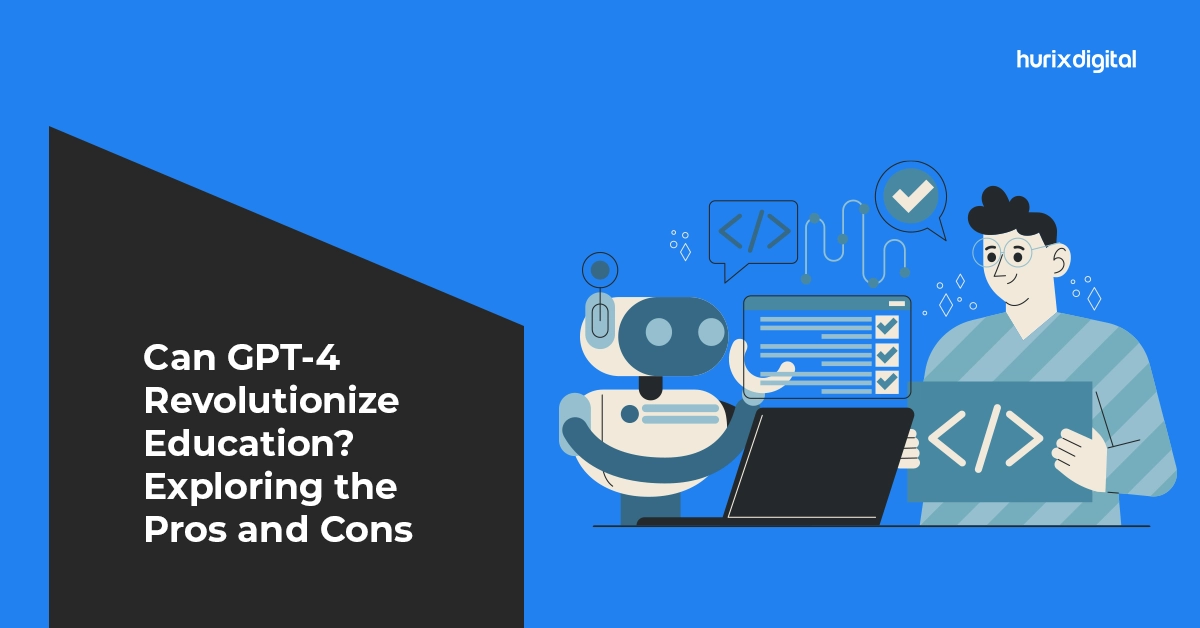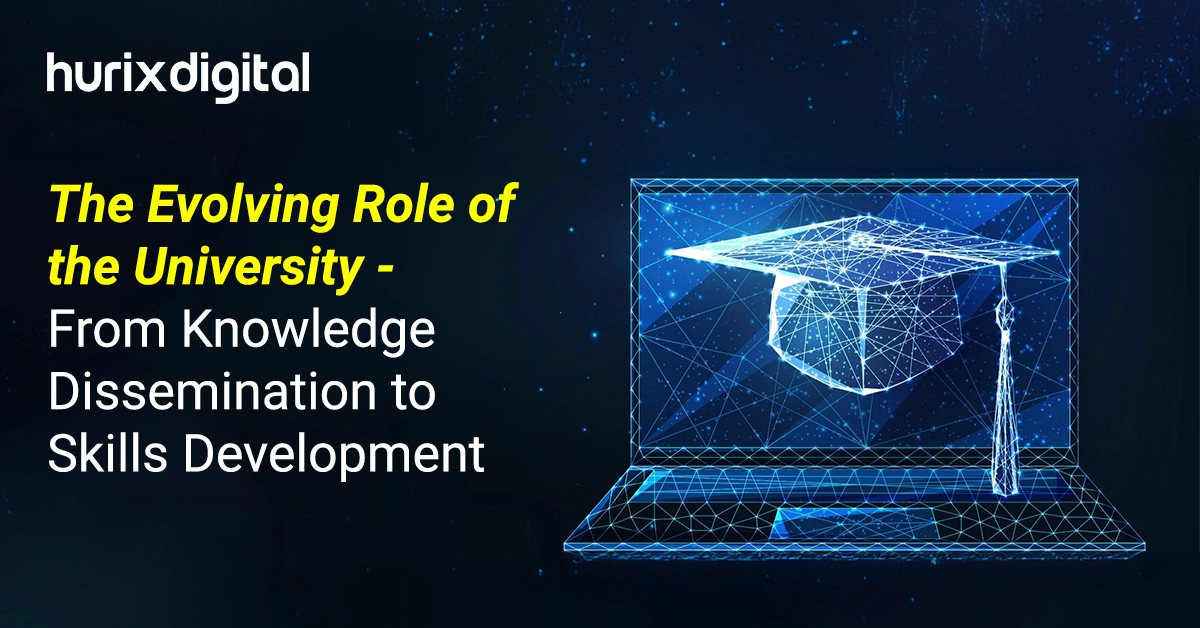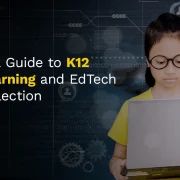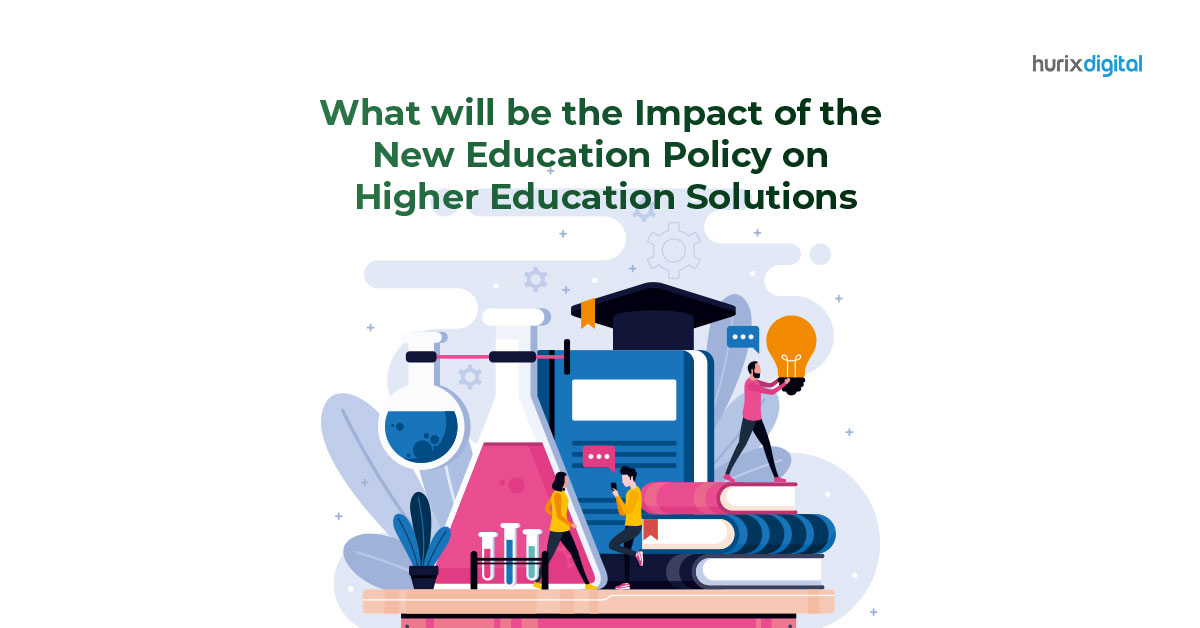
What Will Be The Impact Of The New Education Policy on Higher Education Solutions?
The pandemic brought the entire world to an unexpected halt. While it immobilized multiple sectors, the Government of India took the chance to reform Indian education.
They introduced the New Education Policy (NEP 20) on July 29, 2020, introducing a new foundation for the education system. While education policies get revisions within decades, India took 34 years to revamp its academic culture.
The government first issued education policies in 1968, followed by the second in 1986, and the third in 2020. Now, the policy is approved and is set to be implemented across India. This much-needed reformation was delivered to elevate the level of education offered to learners in India.
At the same time, the policy was introduced to keep up with the e-learning phenomenon. Let us take a deeper dive into the whats and whys of the New Education Policy and its effect.
Table of Contents:
- A Brief Overview Of The New Education Policy (NEP 20)
- The Changes Brought By The New Education Policy (NEP 20)
- The Impact of NEP on Higher Education Solutions
- Challenges of NEP 20
- Conclusion
A Brief Overview Of The New Education Policy (NEP 20)
NEP 20, or New Education Policy, emerged as the first holistic, inclusive, and participatory initiative aimed at reforming the outdated Indian education system.
The reformation was imminent, seeing how over 47 million students were dropping out by the 10th standard. That is why the Indian Government, Justice JS Verma Commission, and the Education Commission decided to revise the education policy.
New Education Policy is their attempt to consider aspects like empirical research, experiences, practical lessons, and stakeholder feedback. The progressive shift could help the lacking Indian education system level to leading nations.
The Changes Brought By The New Education Policy (NEP 20)
Here is a quick overview of the changes brought by NEP 20 to the Indian education system:
| New Education Policy 2020 Differences | ||
| Factors | Previous Educational Policy | New Educational Policy |
| Streams | 3 Primary Streams
|
No Hard Separation |
| Pedagogical Structure | 10 + 2 + 3 | 5 + 3 + 3 + 4 |
| Board Examination | Relies on memorizing facts with yearly Board Exams | Relies on core competencies with board exams being held twice a Year |
| Degree Completion | The degree will be provided After 3 or 4 Years | Offers multiple options with 1 year of training and 2 years of diploma |
| Vocational Studies | None | From class 6th, along with an internship |
| Scores | Based on secured marks | Based on 360° Performance Evaluation |
| Entrance Test | Multiple | One |
The Impact of NEP on Higher Education Solutions
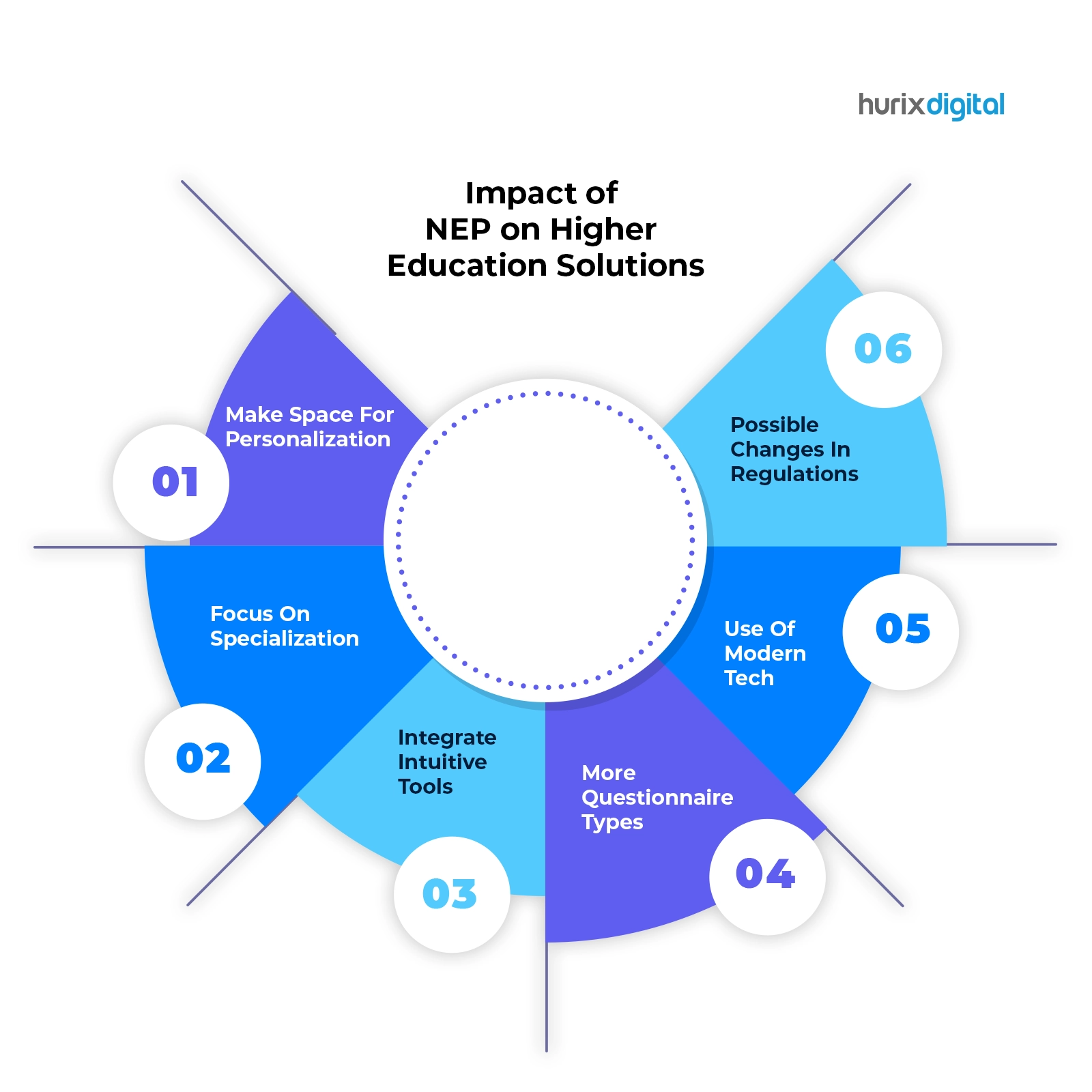
With NEP being approved for implementation, education institutes are set to encounter new challenges with their curriculums and LMS. In addition, higher education solutions used by different agencies will also need to modify their approach to accommodate NEP’s effects.
Here is How the Policy Can Affect Education Solutions:
1. Make Space For Personalization
The New Education Policy is eliminating the rigid system of limited education streams. Thus, higher education solutions will need to modify their products and services accordingly. They will have to focus on offering personalized solutions that can be catered to students’ stream choices.
2. Focus On Specialization
With more learning choices, students will ultimately prefer specialized learning above everything.
Thus, higher education solutions must reform its existing catalog of subject knowledge. They will be needed to employ multiple experts to deliver precise services on multiple subjects.
It will also promote unconventional subjects, like coding, web designing, etc., in a traditional learning space.
3. Integrate Intuitive Tools
Adding intuitive elements like gamification will be a need for modern education solutions. As learners will get the chance to delve into different topics, fun, and interactive elements will simplify the initial stage.
Moreover, the use of video-based elements will boom among education solutions, thanks to NEP.
4. More Questionnaire Types
Currently, most higher education solutions rely on a limited type of questions, such as MCQ, short-answer, and long-answer.
NEP’s implementation will lead to education solutions normalizing polls, research-based questions, skill-based quizzes, etc. With time, more question types will be introduced and popularized among these solutions.
5. Use Of Modern Tech
The use of AI (artificial intelligence) was set to expand in the education industry. The introduction of NEP has speeded up the process severalfold.
As the number of students opting for online learning increases, higher education solutions will need to scale their operations rapidly. The best way to address the increased demand without spending excessive money is by using AI.
It will be cost-effective, highly scalable, and much more efficient than using human resources.
6. Possible Changes In Regulations
Another sidelined but crucial impact of NEP on higher education solutions could be a shift in regulations.
Education platforms might be required to make modifications that bode with the new policy. Seeing how the policy was recently approved, the new compliances and regulations can be released before 2023 ends.
Challenges of New Education Policy (NEP 20)
While the New Education Policy brings multiple pros, it accompanies some cons as well.
1. Learning In Mother Tongue
Teaching will become challenging across different regions in a nation as diverse as India. With 22 scheduled languages and multiple dialects, the curriculums will take time to be translated.
Moreover, it will increase the necessity for skilled teachers or digital learning tools.
2. More Gap Between Students
The difference in the mother tongue can hinder students in higher education as well. With government schools teaching English after class 5, private school students will easily gain an edge over them from the get-go.
3. Lack Of Internet And Smart Devices
Despite higher education solutions becoming a market norm, a major part of India lacks internet and smartphone access.
The poor infrastructure of government schools will be amplified with the policy in rural settings. For a policy as ambitious as NEP to be successful, education institutes in backward areas require rapid advancement.
Conclusion
New Education Policy is set to revolutionize the education system in India, putting it on par with modern academic giants. The policy is aimed at leveraging digital solutions and helping students find their ideal stream early on.
Although the switch-up can be drastic, it will produce long-term benefits. That is why education institutions and higher education solutions have already started making changes in their approach to accommodate the policy.
If you are struggling to do the same or want a solution that helps you capitalize on the policy, Hurix should be your choice. With customized learning solutions, Hurix can help you build or find the ideal set of education solutions needed for your audience.
Get in touch with Hurix and unveil your prowess today!
Also Read – E-Learning in Higher Education: Understanding its Impact on Students and Educators

Senior Vice President
A Business Development professional with >20 years of experience with strong capability to sell new solutions and develop new markets from scratch. New Market Entry Specialist with experience working in the largest emerging markets. Exceptional experience in conceptualizing, ideating and selling new learning technologies like VR AR, etc. across multiple industry verticals.


